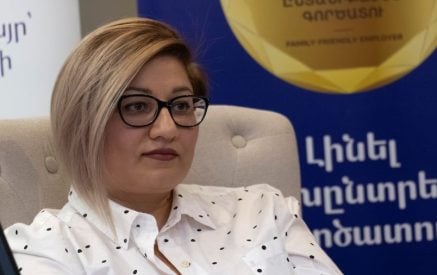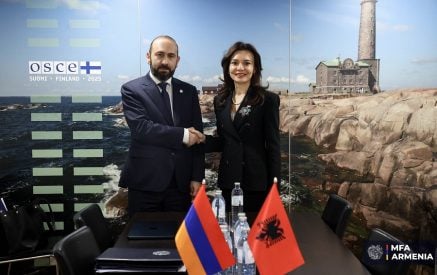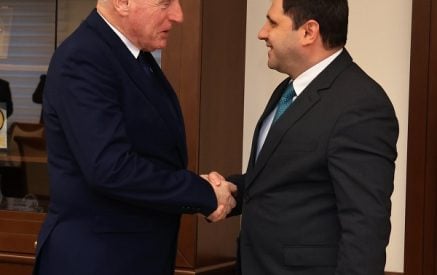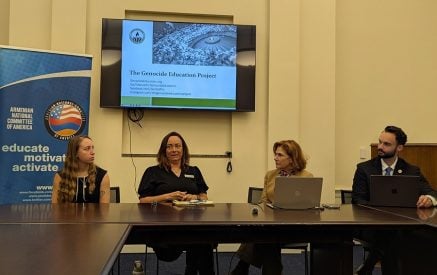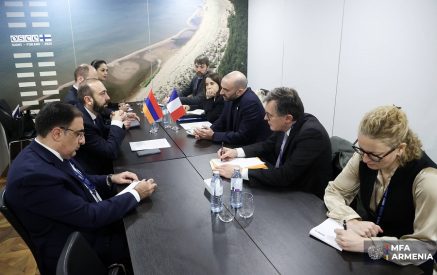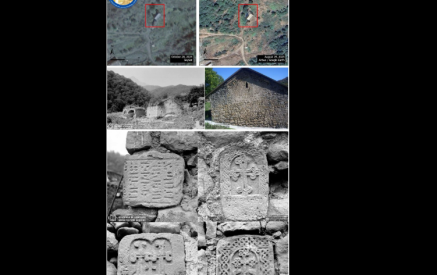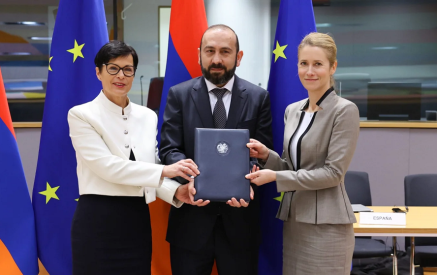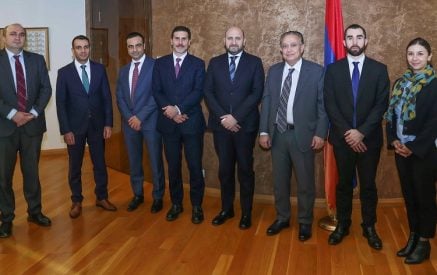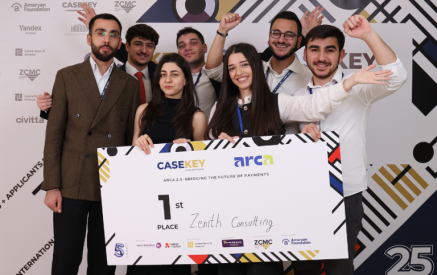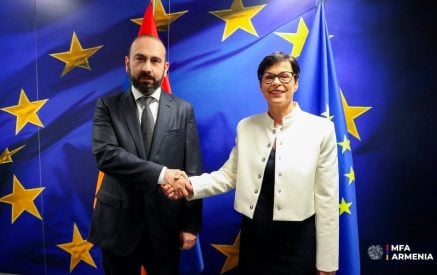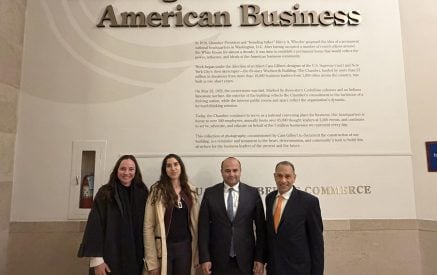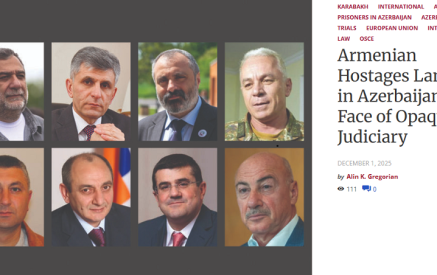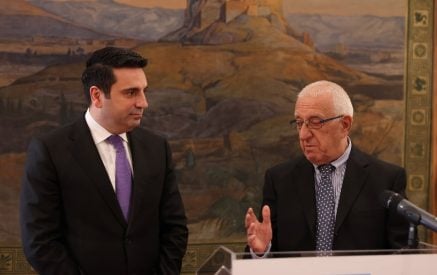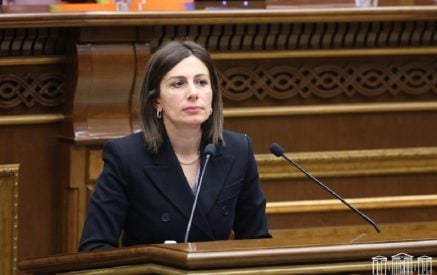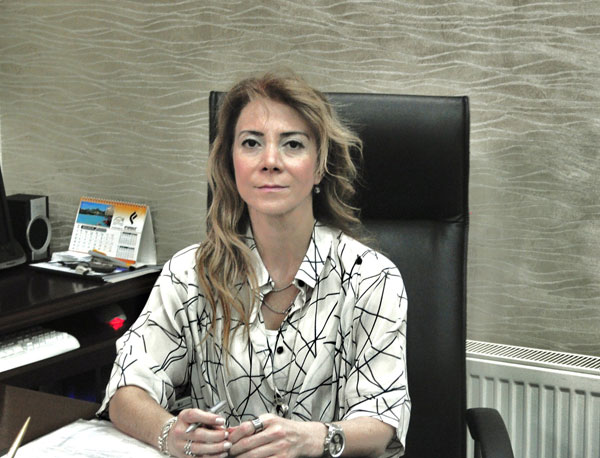Especialy cultural and political groups frequently discuss the situation of Armenian architectural heritage in Turkey after the normalisation process between Turkey and Armenia. About this important subject we talked to Assistant Prof. Dr. Goknur Akcadag from Yıldız Technical University, Istanbul. Akcadag shares the most important points to explain its historical roots and contemporary regulations. You will find new informations from unknown realities.
From the viewpoint of the international law what is the legal status of the Armenian historical and cultural monuments in the territory of Turkey?
I want to mention concerned ministerial’s and other institution’s duties about the issue before some information regarding to protecting cultural assets in international relations. Armenian historical buildings are in this status as the other all different originals. Historical artifacts, protecting structures state guarantee, rules of utilization from monuments, researching artifacts, their maintenance, repairing, restoration, rebuilding according to its fidelity are done according to laws of Ministry of Culture and Tourism.
Municipality has duties as preparing programs for protecting cultural and natural assets, important places for the history of its city. General Directorate of Foundation is another institution which has the authority of restoration. Conservation Implementation and Inspection Offices (CIIO), Special Provincial Administrations, Municipalities and the Ministry, allowed municipalities within the Metropolitan, the protection of the cultural and natural assets necessary to execute the operations and practices, to make the protection controls, implementation, and has served as the control agencies. Structures belonging to the Armenians, according to all these applications are included briefly mentioned institutions.
What is the Turkish state policy towards the issue of the protection, recovery and the prevention of the further destruction of the Armenian historical and cultural monuments?
Protection and restoration without distinction of nationality or cultural policies is important for ministry. In the past, the times when it the understanding of those which concerning Turkish and Moslem structures were makeshifts were examples. These belong to problems of a geography which was cluttered because of not well-understanding the Ottoman Empire and the effects of the big ruining.
Also, need to emphasize that this approach not only towards non-Muslim structures or works of Armenian history, most of the ancient monuments, especially the vast majority of religious structures have been ruined long period of time. Understanding Turkey goes into the way of thinking in different aspects. So the omissions, unreserved Armenian structures, structures that used different purposes were done in some time in Turkey but an approach is unfair to think that everyone in this conception. The problem is also a matter of culture. Long period of time, the whole of the ancient monuments has not been the primary approach of people. 400 years Caravanserai in Malatya until a few years ago was in the ruins and rubble-filled structure. 5-year restoration of this huge structure at the base of the city took place last year. Protection and restoration is a cost. Again, such a cost factor was not considered in the past.
Today Turkey has that economical power to do this. Especially in the last ten years, for restoration and preservation of historical monuments were all recorded big stage, the cost is divided. The institutions, in the first question I lined up, are responsible for many of the buildings in Turkey and are seen to be trying to restore them. In this process, we see the completion of some of Armenian historical buildings and some others are in the restoration process.
For brevity, on the Ministry of Culture and Tourism site, 58,752 examples of civil architecture, religious buildings, including 8224, 94,388 works in Turkey are located in the inventory lists of records. I made a summary assessment by scanning lists of the churches in this 214-page information. Without distinction of nationality in the list of Armenian, Greek, Syrian, etc.. are given, how many of them belonging to Armenian, how many of them belonging to other nations or communities, it is not possible from the list.
This list is based on the numerical summary; a total of 2149 pieces of the structure according to the species is divided as follows:
Religious building, the church: 1878
The ancient church (those in the archaeological site, the rock churches): 37
Registered in the name of mosque, the church: 121
Fountains in the ruins of the church and the church: 70
Called the “church” in terms of some buildings, the church door, cultural and folk culture elements, the abstract works, paintings, figurines, clothing, candle holders, carpet, church motif details, photographs, inscriptions, curb, tombs, depictions, statues, altar, pastor pulpit, cross, ritual music…
Specimens of Architecture and Civil Repairs Monumental Buildings: Erzurum, Amasya Öşvank Church History of the Armenian Church, Kars, Ani, Tigran Honents Church (Painted Church), Restoration and Landscaping Akdamar Church, Monastery, Trabzon Sumela, Burdur Kavakli inserted into the process of restoration of the Greek Church, and others of the Armenian… One of the churches, the church was Taşhoron Malatya.
Are Armenian architects, archeologists and other specialists involved in the restoration process of the Armenian historical monuments in the territory of Turkey?
I do not think that there is a practicing of restoration of the structures according to nationality. The important stages of construction within the framework of general rules of the restoration; there are many academics, architects, archaeologists and art historians Armenians structures in Turkey. Such an understanding that Turks know Turkish structures, Armenians know Armenian structures; Greeks know Greek structures would be wrong.
The important thing is our area of expertise, not nationalities. At universities of architecture, restoration and art history departments, there are a lot of thesis on different topics of Armenian structures. Turkish citizens of Armenian origin, was also to correspond to a coincidence. Document in their hands, as long as those details may be better to contribute to the course. Because, sometimes in the restoration of buildings, photographs, documents, seeking information is needed.
For a few examples; Nimet G. Korkmaz, Surp Sarkis Armenian Church Restoration Proposal for the Scope of Churches in Diyarbakir, YTU, Master of Architecture Thesis 2006; Özlem Tanis, Germir va churches of Panagia “Kimisis-Tis Theotoku” Evaluation of the church in today’s conditions [Churchs in Germir and the evaluation of the Panagia “Kimisis -Tis Theotoku “aspect of the conditions in the church today]; Prescription Sunay, Aksaray Morphou monastery and church buildings [The monastery and church buildings of Aksaray Morphou], PhD Thesis, University of Ankara. SBE; Selinda Sumer, the Armenian churches of Istanbul, the Orthodox baptism places [places of Baptism Armenian Orthodox churches in Istanbul], Master Thesis, Istanbul Technical University, SBE)
Does Turkish society realize the importance of the Armenian historical and cultural heritage and the necessity of it’s protection in the territory of Turkey?
The answer to this issue, for the second question is the reply I gave. Understanding of the protection of historical monuments is a matter of a culture. Armenian historical artifacts take precedence as all other works. Generally welcoming the decision by the Turkish society with the restoration of works of Armenian, discontent can be felt in at least one sector. Such an approach is in each community, the general approach has the priority. Some people in both communities, their explanations of camping ideas can produce. It does not benefit the communities and to understand each other. This approach also emerged in the Armenian architects. Two statements, such as said that Armenian architects are important and ones who were so disturbed because of caring Armenian architects are wrong understandings.
In the past, “Anatolian” Turks and Armenians lived together, despite the problems of common property, combined, are aware of their similarities. Forming part of the Armenian cultural heritage preservation and restoration of structures, are also important for cultural tourism, too. Armenians who bond to these lands visits restored churches and artifacts will be the best result. Last year, at the opening after the repair of Van Akdamar Church images revealed that.
Nowadays Istanbul’s historical architectural landscape is definitely formed by the efforts of the Armenian architects. What is the key role of Armenian architects in that issue?
In the 19th century, new types of buildings in Istanbul, the new urban areas and new architectural designs, bank, library, barracks, schools and government agencies began to be seen on the new buildings. Palaces and mansions in the Western architectural style gradually spread to the shores of the Bosphorus. Resulting in Istanbul’s cosmopolitan architecture, previously met by a response in time, began to be seen accepted, the application of non-Muslim Ottoman architects almost a new style, a “Turkish Baroque” style has revealed. Galata and Beyoglu districts where Levantines and non-Muslims lived started to be built as an entertainment and business center with the new buildings. This new process, the traditional architectural style, neo-classical and eclectic turned to look for new alternatives. In the dynamics of the developments described in above, other architects and Armenian architects are needed to be evaluated together.
In the last 70 years of the empire, there are artifacts were built under the influence of European architecture, the work of the Armenian construction are also numerous. Armenian architects came from architects of the quarry foreman tradition. Balyans were among these families in the 19th century. Dolmabahçe, Beylerbeyi, Ciragan Palaces, mosques built by Abdulmecid Khan’s mother, as water facilities and new churches were made Valide Bend. Church of St. Gregory the Illuminator that the designs of Serveryan had appeared. Balyan family, as well as Serveryan, Leyon Nafilyan who built Business Bank in Bahcekapi, Agopyan Han, Karaköy Hovagimyan the national architecture pioneer, too.
In Fatih Çarşamba old Darussafaka High School building is the work of the journeyman Ohannes. Art historian Osman Can wrote that during the reign of Sultan Abdul Aziz Serkis Balyan was the pioneer of constructing and with the support of the Sultan Abdul Aziz, established “Minister of Public Works Company Osmani”.
Dr. Afife Batur who evaluates Armenian architects within the Ottoman architects and masters of and craftsmen says breaking away from the nationalist sense I don’t consider the buildings with Armenian, Greek, Levantine, Italian’s ethnic identity, I am interested in the artifacts itself, Balyans’ architectures has local and traditional items. Dolmabahce palace itself is the most obvious example of this. From 19th century until 20th century, contractor and architect were not a different; they were the designers and the contractors of their jobs. Important works of Armenian architecture and the journeymen and their contributions to the architecture of Istanbul, is already generally accepted. To say that Istanbul’s architecture was changed by those nations or groups is wrong.
Communities in the Ottoman Empire even though from different religions and nationalities living together and they had kept places in society, they were together. According to the information extracted from archives, while Beylerbeyi Palace was being built employees and people from who were bought goods, the buildings reflect a full understanding of the Ottoman cosmopolitan.
If we are to continue through the example of Beylerbeyi Palace, the copper used in the construction was provided by the merchants Coppersmith Tabako and Yanko. Hammam and furnace boilers were bought from Agop, Haji Ahmad Agha glass contractor, master of engraving was Hristo Engraver. Candelabra and chandeliers, with repair, install, and works like a master had made the Jewish Hayim. Chopping was mainly made by Vortik Kemhaciyan who had a workshop in Ihlamur and Gümüşsuyu, main building, floor, ceiling beams and wooden partitions Lazoglu Ohannes by manufacturing, colored and marbled plaster was carried out by somakici Kirkor, and Mayar. Stonemason Nisan and stonemason Arakil, Ashraf teacher, as I esnaftan Uskudarli stone mason, Kosti Haji, Haji Mihael, such as the business arm of Haci Hristo dominant, many non-Muslim esnaftan rubble stone, marble Mihael’den Marmarali Najjar Halil Efendi and had been received. Some traders even an American merchant iron, Baruthaneli Dimitri, tuğlacı Taurus and Murad, Hasköy Sahbaz Harman and tiles and bricks were purchased from Mürefteli Panayot. In debris removal surgeon Kasim and Persian Aziz’s are heard. Arrangement of the Sari pavilion facing the garden was carried out by the gardener Deron Monsieur. Inscriptions on the ceilings were written by Hassa poets, palace’s room and living room ceiling inscriptions were written by the famous master calligraphers of the Abdülfettah. As a last, let’s add a Frenchman into this variety: Beylerbeyi Palace, the middle and upper floor ceiling of the palace is showing the first period on animal images, these images are terminated by order of the sultan in 1868, was transformed into pictures of the ship by means of court painter, Monsieur Mason. Today, we can see such an Ottoman cosmopolitanism only in New York.
Interview prepared by Mehmet Fatih ÖZTARSU
with Assistant Prof. Dr. Göknur AKÇADAĞ – Yıldız Technical University
under the ICFJ Turkish – Armenian Crossborder Project, Washington D.C.



